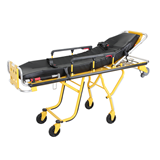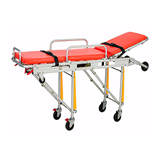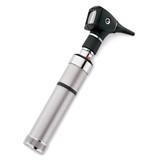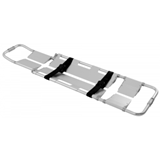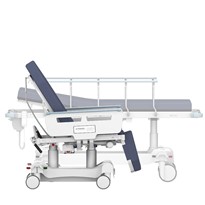Are you in the market for a hospital stretcher?
With so many stretcher options and manufacturer’s available globally to choose from, it can be challenging to find unbiased and thorough information relevant to you.
Purchasing healthcare equipment can be a big decision and we want to ensure you have the full picture from start to finish, so you can have confidence in the choices you make.
In this article, we discuss 4 of the most common maintenance problems that might occur in patient trolleys- and how to avoid them.
Most common issues with stretchers
- Stretcher Castors
- Backrest Gas Cylinder
- Lift and Articulation Cylinders
- Stretcher Side rails
Stretcher Castors
Castors are essential to the mobility of stretchers, so naturally they can break or deteriorate over time given the environment they’re in or the amount of use they’re subjected to.
You could possibly experience castors falling off, not locking properly or have poor calibration when it comes to brakes and steering. If your castors are failing to lock, it’s recommended that you check for debris or other constrictions around the pedals and castors that could be the cause of the lock. If everything is clear, it might be an internal issue with the components of the locking system and a repair or replacement of parts will be needed to fix this.
If you are experiencing any of these mechanical issues with your castors, your manufacturer should be able to provide you with the required spare parts and the servicing of the stretcher.
Backrest Gas Cylinder
A backrest gas cylinder on a stretcher encounters heavy daily use in its lifetime. Depending on the harshness of this use, the cylinder can begin to wear out overtime. If you notice that the cylinder drifts down after being placed in an inclined position, can no longer reach its highest point, or if it becomes harder to raise, it could mean that the cylinder may be on its last legs and should be serviced right away. It’s important to note that if the cylinder has indeed become harder to raise, that the stretcher be placed where it can no longer be used until it has been serviced as this can cause greater risks of injury to both staff and patients.
Lift and Articulation Cylinders
The functionality of these particular cylinders are largely dependent on a stretcher’s safe working load. Not all cylinders are created to handle the same weight capacity and being mindful of a stretcher's weight capacity can help to prolong its life. However, if you notice that the pedals or levers that control these cylinders have become stiff or difficult to maneuver, or that the stretcher is making noise or squeaking when being used, can be a strong indication that the stretcher is ready to be serviced by a professional.
Stretcher Side Rails
Drop Sides or side rails on a stretcher are vital for the safety of your patients. Side rails ensure that your patients do not fall off of the bed; however, overtime these can quickly become worn out and malfunction due to the constant wear and tear from everyday use. The most common problems to watch out for, include the side rails failing to properly lock into place or falling out of the locked position, becoming a pinching hazard when raising or lowering the drop sides if they fail to create a zero transfer gap. If your patient trolley cannot obtain a zero transfer gap, it could potentially be more dangerous and difficult to transfer a patient.
Stretchers or patient trolleys are critical pieces of equipment that are used daily in hospitals for a range of different tasks and requirements. Naturally, the mechanisms of such equipment should be expected to wear out or malfunction over time. It is recommended, for the safety of all staff and patients, that medical equipment be properly inspected and maintained regularly.
We hope you’ve found this information useful and wish you all the best on your journey to find the right stretcher for your department.
Modsel has developed a comprehensive program of trained and like-minded service technicians who can keep your stretchers and chairs operating at peak performance while giving you peace of mind and installing confidence for both staff and patients who are using the equipment.
You can find your MODSEL approved Service Checklist under your products user guide on the Modsel website.



